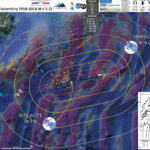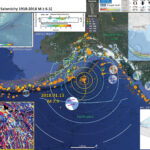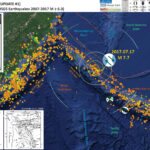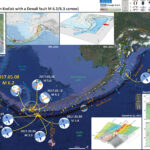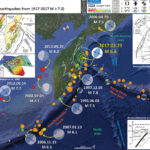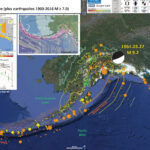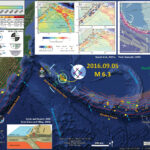Well. What a firestorm of social media discusions about this earthquake. It seems that, like how we learn so much when earthquakes like this happen, the amount of interacting in public on social media has been growing earthquake by earthquake.…
Earthquake Report: Gulf of Alaska!
I was asleep in bed, trying to catch up to prevent myself from getting ill, when there was a large earthquake in the Gulf of Alaska (GA), offshore of Kodiak, Alaska. When I wakened, I noticed a fb message from…
Earthquake Report: Bering fracture zone: UPDATE #1
Well, based upon a comment on twitter, I thought it prudent to review the seismicity of this region at the westernmost part of the western Aleutian Islands. For many years I considered this region part of the subduction zone that…
Earthquake Report: Western Aleutians
We just had an earthquake along the western Aleutian Islands, very close to the international date line. In this region places often have more than two names, depending upon who drew the map. The majority of the Aleutian Islands are…
Earthquake Report: Westernmost Aleutian Arc
This earthquake happened a couple weeks ago, but was interesting and I have been looking forward to following up on this with a report. Here is the USGS website for this M 6.8 earthquake. The M 6.8 earthquake happened in…
Earthquake Report: Aleutian Trench
Well, well, well. What have we here. We have some earthquakes that are related to each other and some earthquakes that are not. Less than 2 weeks ago there initiated a sequence of earthquakes along a fault splaying off of…
Earthquake Report: Kamchatka!
This earthquake happened last night as I was preparing course materials for this morning. Initially it was a magnitude 6.9, but later modified to be M 6.9. This earthquake happened in an interesting region of the world where there is…
Good Friday Earthquake 27 March 1964
In March of 1964, plate tectonics was still a hotly debated topic at scientific meetings worldwide. Some people still do not accept this theory (some Russian geologists favor alternative hypotheses; Shevchenko et al., 2006). At the time, there was some…
Earthquake Report: Alaska
We had an earthquake a few days ago along the Cook Strait west of Anchorage, Alaska. This earthquake happened nearby a couple earthquakes from the past 2 years that have similar senses of motion along faults that seem to be…
Earthquake Report: Bering-Kresla Shear Zone (Russia, west of Aleutians)
If there is an earthquake and nobody is there to feel it, did it shake? Here is the USGS website for the M 6.3 earthquake that occurred in the far western Aleutians, so far west, it is called Russia. Below…
